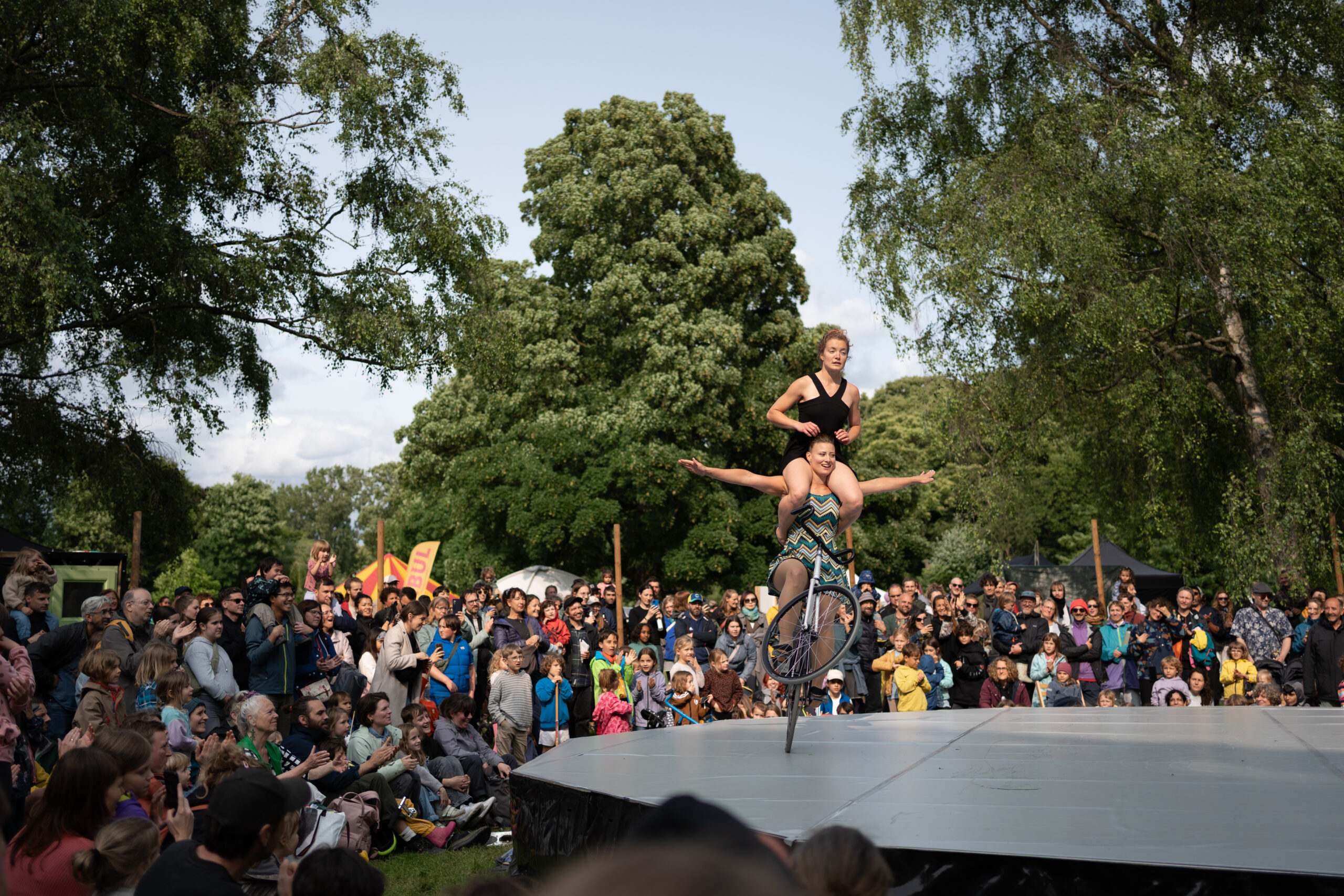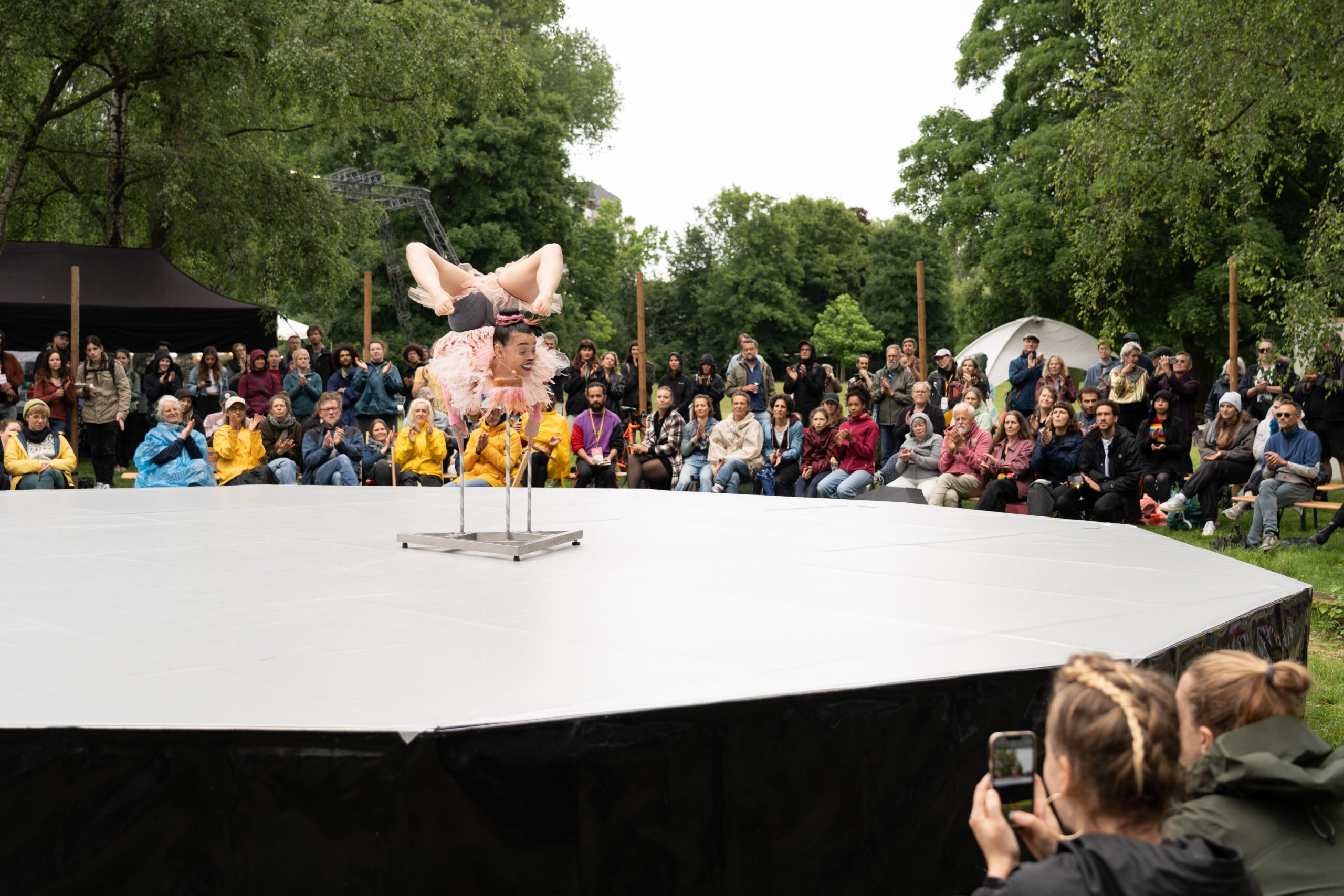The Circus Dance Festival in Köln – More than a Festival
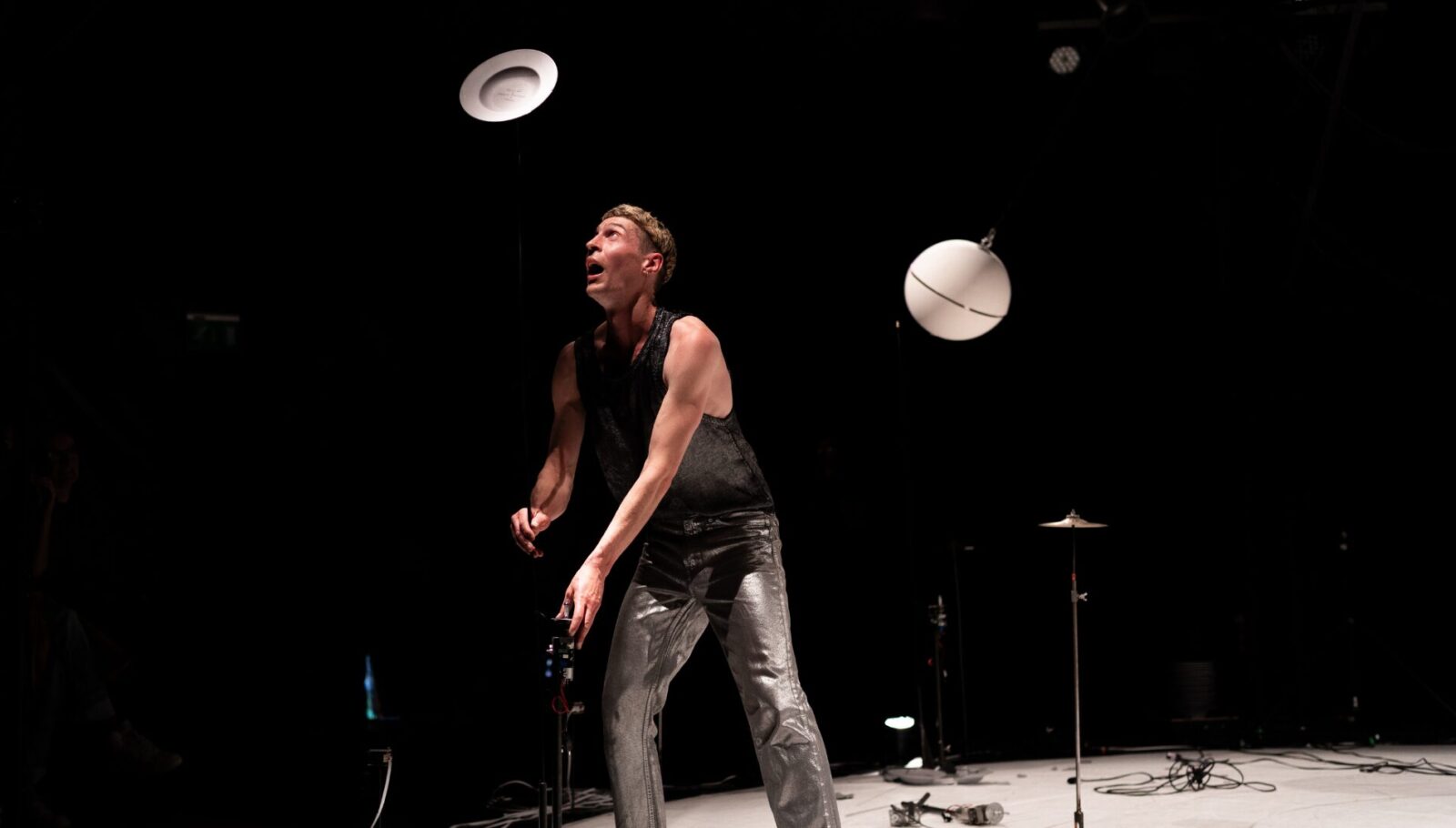
When Tim Behren and his team launched the Circus Dance Festival in Köln, Germany, in 2018, it was clear: this project should do more than just provide a stage. It should serve the further development of the contemporary circus community – aesthetically, structurally, and politically. Since then, the festival in Cologne has developed into an important meeting place for contemporary circus in Europe – with a clear focus: the connection between circus and dance. Tim Behren chose this curatorial focus because, as a circus artist and choreographer, he himself moves between the worlds of these genres.
2025 was a particularly challenging year for the Circus Dance Festival: Despite massive cuts in cultural funding, the festival once again presented itself as a platform, a space for discourse, and an experimental field for circus forms – reduced in scope but not in depth, supplemented by interesting formats that made a virtue out of necessity. “This year’s edition was deliberately compact,” says festival director Tim Behren. “But our aim remained the same: to open up new perspectives on circus art.”
Founded as a project by the Cologne-based collective Overhead Project, the festival originally emerged from an idea within the framework of the federal Tanzpakt funding program. However, it quickly grew beyond the mere performance format. Tim Behren himself calls it a “festival plus”: In addition to the stage productions, discussions are initiated, universities are involved, young talent is supported, and publications are published. “We want to show not only what is – but also what is missing and what could be possible,” Behren says, describing the festival’s identity.
This attitude is noticeable: beyond the actual festival, special projects dedicated to research, cultural education, and communication take place throughout the year. With this mix, the festival has developed a unique selling point.
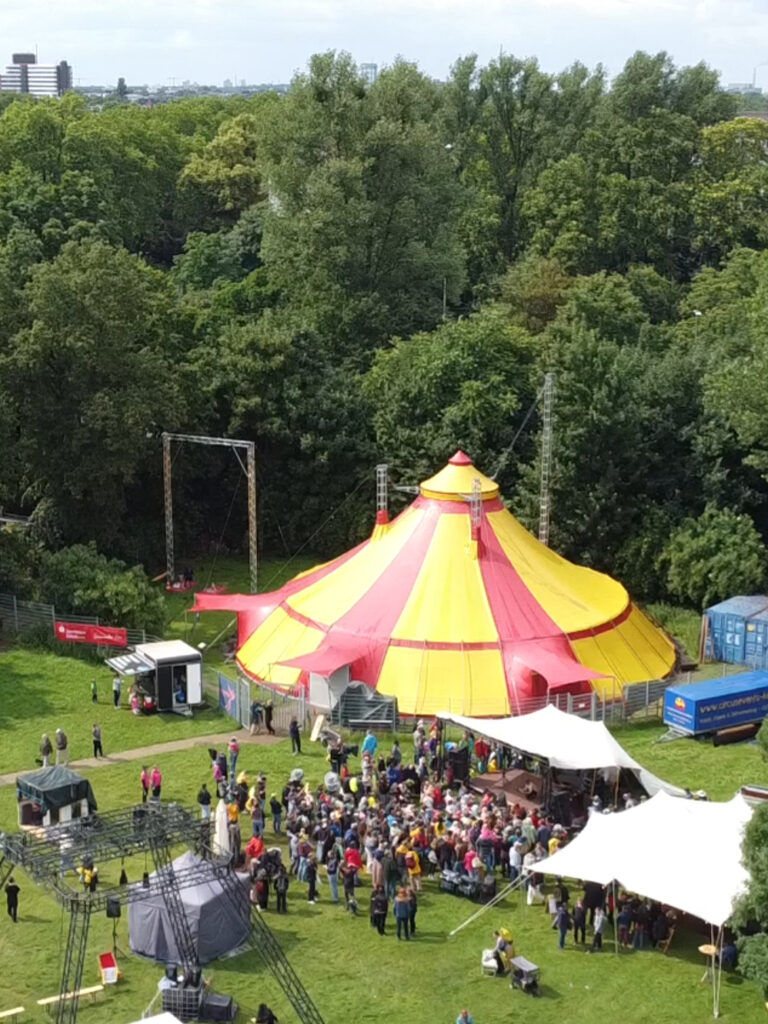
This year’s festival was significantly shorter than in previous years – only three days instead of the usual ten. This shortening was particularly evident in the two solo shows in the main program. They exemplify the festival’s aesthetic, which is sometimes challenging and distances itself further from typical associations with circus than is the case even at most contemporary circus festivals.
On the one hand, there’s Julian Vogel from Switzerland, who presents his performance “Ceramic Circus.” A game of expectations unfolds beneath a large ceramic sphere circling the room. The reduced nature and the slow build-up of tension lead to some lengthy parts in the performances. However, when plate spinning escalates into a stage-filling performance with unexpected technical twists, the audience is fully engaged – and finds themselves with a certain joy in shattering the ceramics.
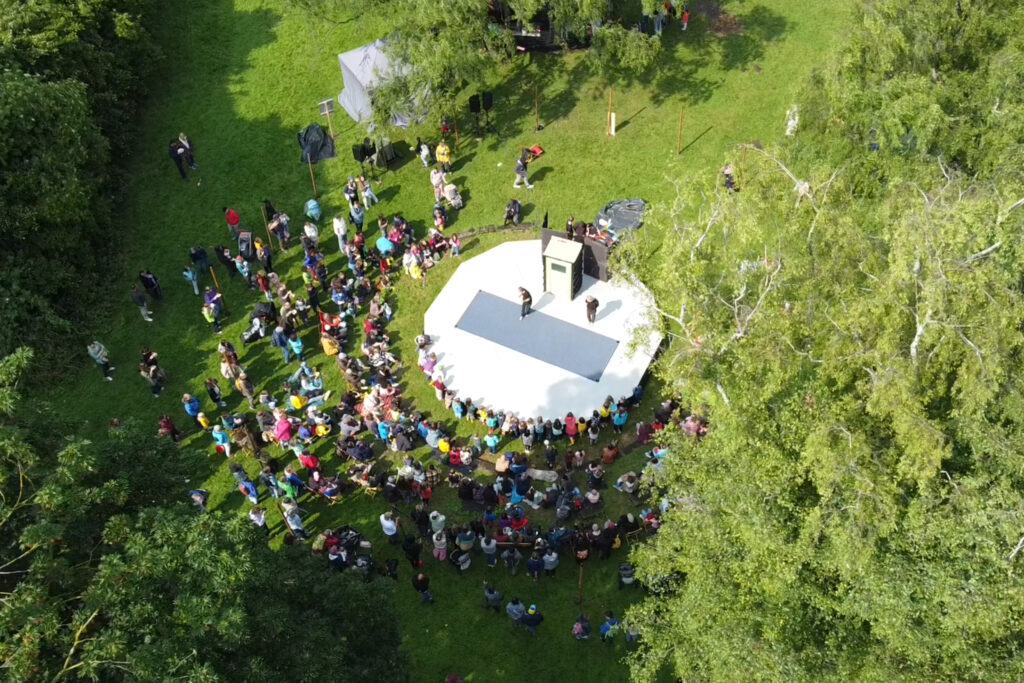
Melissa G. is also from Switzerland. Her solo performance “Rapunzel” is atmospherically dense and has a disturbing aesthetic. Her impulsive dance performance “Down – Single Version” with drummer Clément Grin, on the other hand, is an energetic firework. In both pieces, it’s debatable to what extent elements of circus art are recognizable, or whether they are more appropriately classified as contemporary dance.
Even though the main program in 2025 was reduced, the special formats made up for it. The 360° Shorts Open Air format was particularly impressive – despite a largely rainy festival weekend. Over 300 applications from around the world, nine selected works – all conceived in the round, all with the premise of demonstrating a clear signature in a maximum of 15 minutes. Among the performers were “Les Têtes Chromées” from France, with a duo work on two Washington trapezes entitled “Chaos-oscillateur,” which confidently incorporated sophisticated tricks into its choreography even as the rain began to fall. Brazilian handstand acrobat Leles presented her humorous solo performance “Emotional Balance” as a whimsical creature that squeezes the one-armed person as naturally as a flamingo stands on one leg. And Justine Berthillot from France literally works herself into a frenzy on roller skates to the drums of Xavier Roumagnac, as if the beats were setting her in motion. “The circular format challenges the artists,” says Tim Behren. “It requires a different dramaturgy, a different relationship with the audience. And it fully brings out the specificity of circus as a spatial art form.”
Photos by Franzi Schardt
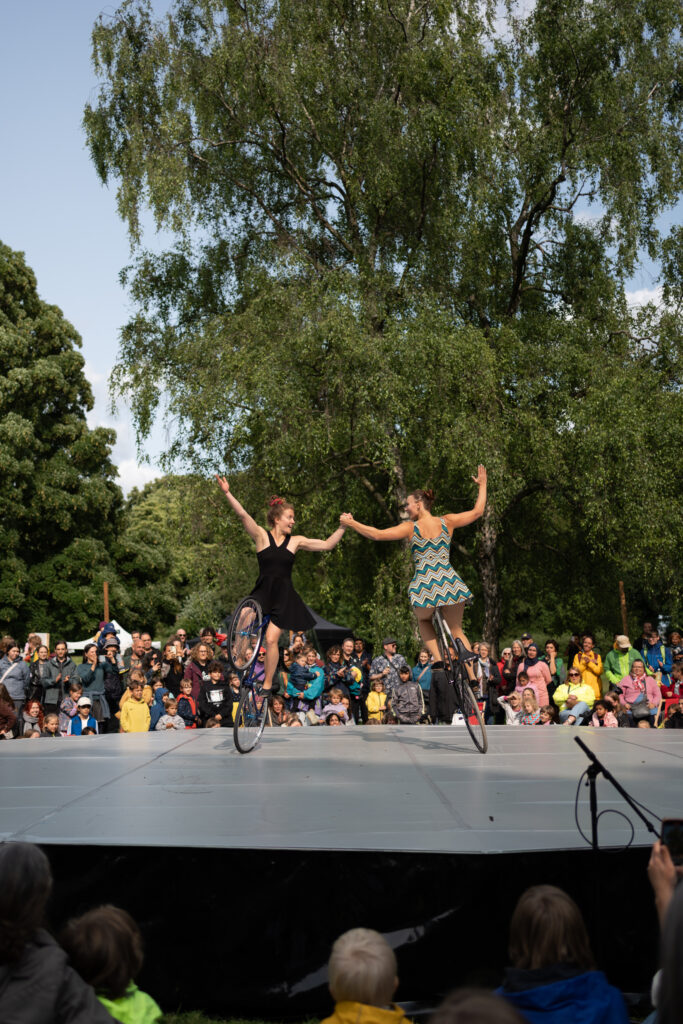
One could also say “back to the roots,” since a varied compilation of short performances in a 360° setting is, after all, a characteristic of classic circus. The inevitable association leads to further thought: Could this format help transcend genre boundaries? Classic circus acts don’t fit into the typical format of contemporary circus festivals that present shows. Contemporary circus productions, on the other hand, are difficult to integrate into a classic number program. But 15 minutes can be sufficient to present a conceptual work, while a classic circus act can certainly be expanded to around 15 minutes – as Fleuriane Cornet and Antonia Bärk demonstrated with their artistic bicycle performance. While the two didn’t perform in the shorts section, but as part of the festival’s family day curated by the Latibul Youth Circus Center, they expanded their act into a 15-minute show specifically for their performance. Rarely has one seen artistic cycling on a circus stage with such technical perfection and, at the same time, such ease – for me, an absolute highlight of the festival program.
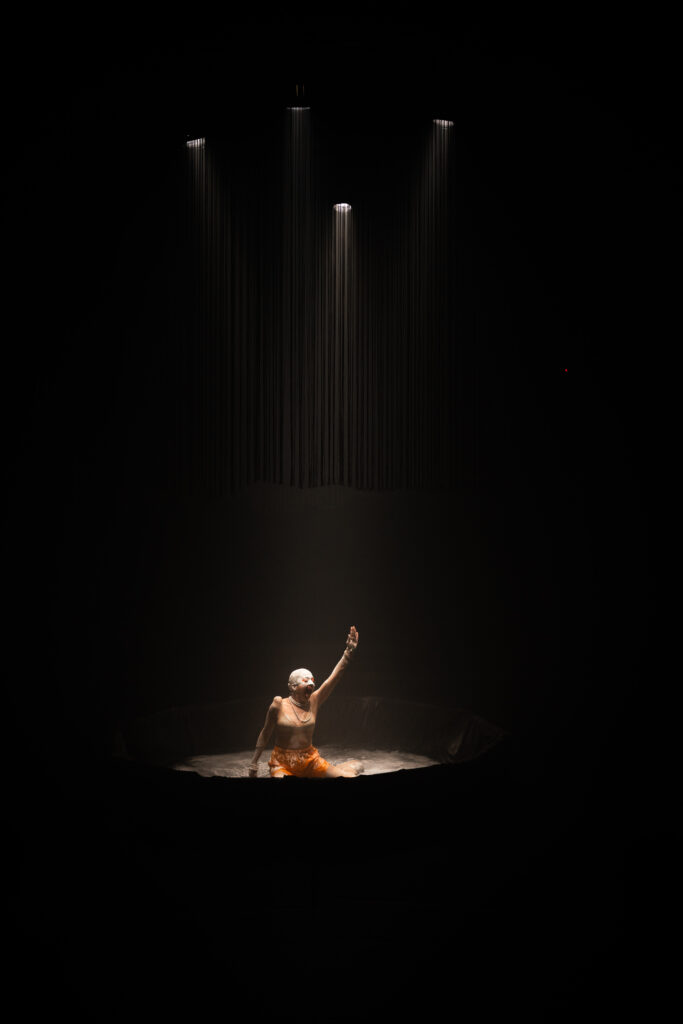
The collaboration with Latibul remains a core element of the festival, and not just because it takes place on its grounds. “We want to convey circus as an art form – also for children,” says Tim Behren. “That means creating spaces for participation, but also spaces for reflection.” In his view, this is the key to making the boundaries between youth circus and professional circus more permeable. Thus, at “Latibul Circus Garden,” as the festival’s family day is called, the boundaries are completely invisible, with youth circus groups sharing the stage with professional artists – and perhaps some of the encounters on this day will lay the foundation for later professionalization.
For years, the Circus Dance Festival has also featured a film program, curated in collaboration with ARTE. A short film evening offered documentary, essayistic, and experimental perspectives on circus art. The ARTE documentary titled “Artistics from Another World” followed the successful Australian company “Gravity and Other Myth” during their performances.
The festival is rounded out by a professional program aimed at representatives of the circus community – artists, producers, and event organizers. This year’s program included, in addition to opportunities for informal exchange, a conference entitled “Take Care – Circus Life in a Swing.” In cooperation with the EU program “Creative Europe” and the European Circus Schools Association (FEDEC), the conference focused on mental health and well-being in the circus and the performing arts.
What will remain after the 2025 edition? A festival that has asserted itself through its focus of content rather than mass. A place that inspires reflection on what circus is and can be. And the realization that neither funding cuts nor rain showers could dampen its spirit.
This article was originally published at Scenic Circus.
Editor's Note: At StageLync, an international platform for the performing arts, we celebrate the diversity of our writers' backgrounds. We recognize and support their choice to use either American or British English in their articles, respecting their individual preferences and origins. This policy allows us to embrace a wide range of linguistic expressions, enriching our content and reflecting the global nature of our community.
🎧 Join us on the StageLync Podcast for inspiring stories from the world of performing arts! Tune in to hear from the creative minds who bring magic to life, both onstage and behind the scenes. 🎙️ 👉 Listen now!

